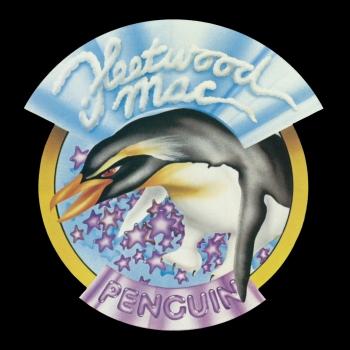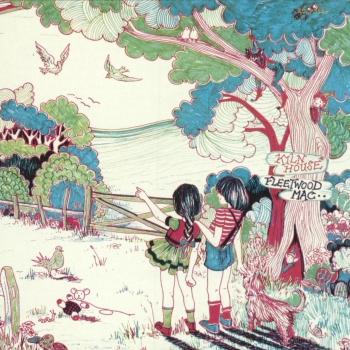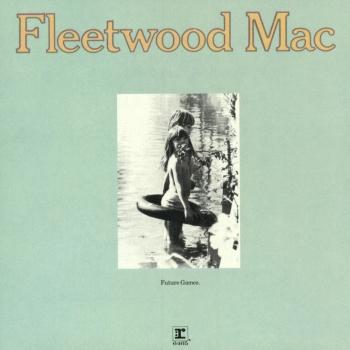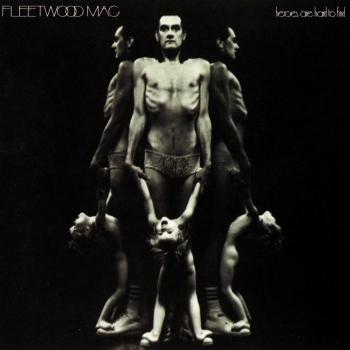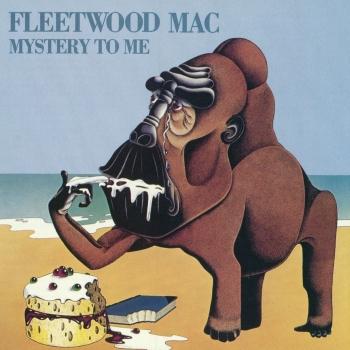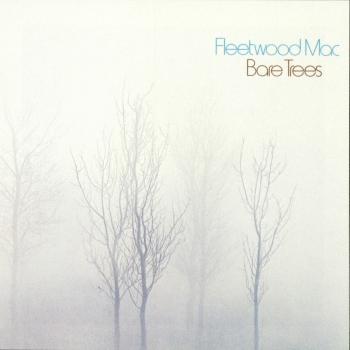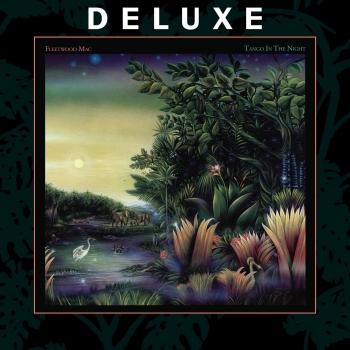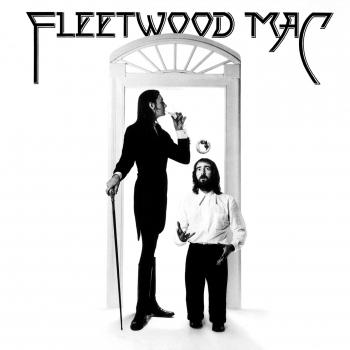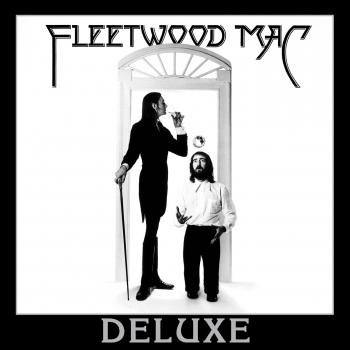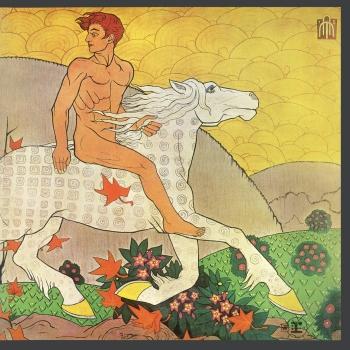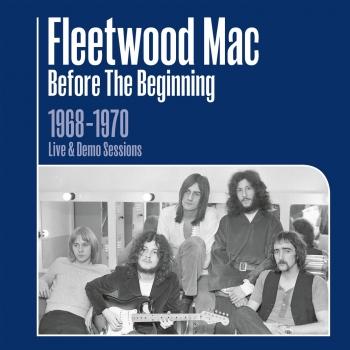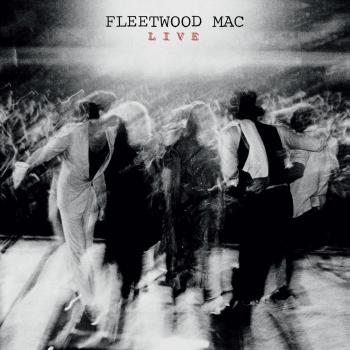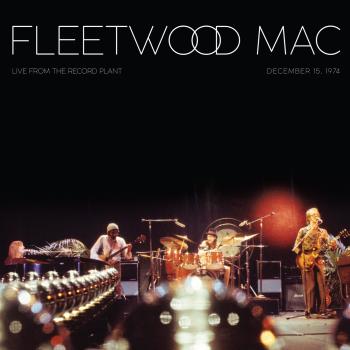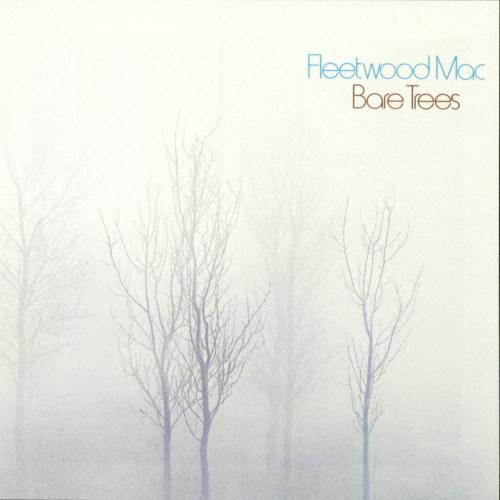
Bare Trees (Remastered) Fleetwood Mac
Album info
Album-Release:
1972
HRA-Release:
31.03.2017
Album including Album cover
I`m sorry!
Dear HIGHRESAUDIO Visitor,
due to territorial constraints and also different releases dates in each country you currently can`t purchase this album. We are updating our release dates twice a week. So, please feel free to check from time-to-time, if the album is available for your country.
We suggest, that you bookmark the album and use our Short List function.
Thank you for your understanding and patience.
Yours sincerely, HIGHRESAUDIO
- 1 Child Of Mine 05:29
- 2 The Ghost 04:02
- 3 Homeward Bound 03:23
- 4 Sunny Side Of Heaven 03:11
- 5 Bare Trees 05:05
- 6 Sentimental Lady 04:36
- 7 Danny's Chant 03:19
- 8 Spare Me A Little Of Your Love 03:46
- 9 Dust 02:40
- 10 Thoughts On A Grey Day 01:42
Info for Bare Trees (Remastered)
Fleetwood Mac's massive pop success often overshadows the group's origins as one of the premier English blues bands of the sixties. Mac's 1972 album, „Bare Trees“, found the group searching for a new direction, having lost both of their stellar lead guitarists--Peter Green and Jeremy Spencer--to the excesses of the '60s rock lifestyle. Joined by new guitarist/vocalist Bob Welch and bassist John McVie's wife Christine on keyboards and vocals, Fleetwood Mac reinvented itself as a more pop-oriented rock band.
The real star of „Bare Trees“ is guitarist/vocalist Danny Kirwan, who contributes the gorgeous guitar instrumental "Sunny Side of Heaven" and "Bare Trees," a funky rocker that was a massive FM radio staple throughout the seventies. It was new guitarist Bob Welch, however, who wrote and sang the modest hit "Sentimental Lady," a haunting, romantic ballad that remains one of Fleetwood Mac's finest moments. Christime McVie's "Spare Me A Little Of Your Love" hints at Fleetwood Mac's future direction. „Bare Trees“ is a rewarding, well-crafted album that stands on its own merits rather than the Fleetwood Mac legend.
„Arguably the first consistently strong album Fleetwood Mac ever recorded -- all the way back into the Peter Green/Jeremy Spencer era, the Mac's albums had previously consisted of individual moments of brilliance in a sea of uninspired filler -- 1972's Bare Trees is also the album where the band finally defines its post-blues musical personality. Low-key but less narcoleptically mellow than 1971's sleepy Future Games, Bare Trees is a singer/songwriter album in the traditional early-'70s style, backed up with just enough musical muscle to keep from sounding like weedy soft rock in the manner of Bread or Cat Stevens. This is the one Fleetwood Mac album on which singer/guitarist Danny Kirwan is the dominant figure, writing five songs to Christine McVie and Bob Welch's two apiece. Impressively, all three writers get off a small masterpiece on side two; McVie's "Spare Me a Little of Your Love" sounds like a dry run for the string of hits she would start writing with 1975's Fleetwood Mac, and it's her first really good pop song. By comparison, Kirwan and Welch's best songs are all-time career highlights. Kirwan's "Dust" combines a gentle, gliding melody with resigned, melancholy lyrics and his most memorable chorus. Welch's "Sentimental Lady" was, of course, his first solo hit in its 1977 re-recorded version, but this original take is far superior, and one of the great lost pop songs of the early '70s. Outfitted with a terrific vocal melody, hooks galore, and an impressive tremolo guitar solo, "Sentimental Lady" is perhaps a little trite lyrically, but it's a heartfelt and lovable tune regardless, and the best thing Fleetwood Mac did in the years between "Albatross" and "Over My Head." The rest of the album is less magical, but the instrumental "Sunny Side of Heaven" and the downright funky "Danny's Chant" are impressive in their use of atmospheric arrangements and so point toward the subtle but effective production choices that would make Fleetwood Mac and Rumours among the most listenable albums of their time. Bare Trees isn't in that league, but it shows that after five years of false starts and failed experiments, Fleetwood Mac were finally on their way.“ (Stewart Mason, AMG)
Danny Kirwan, guitar, vocals
Bob Welch, guitar, vocals
Christine McVie, keyboards, vocals
John McVie, bass
Mick Fleetwood, drums, percussion
Recorded 1971–1972 at De Lane Lea Music Centre, Wembley, London
(apart from track 10, recorded at Mrs Scarrott's home in Hampshire)
Engineered by Martin Birch
Produced by Fleetwood Mac
Digitally remastered
Please Note: We offer this album in its native sampling rate of 44.1 kHz, 24-bit. The provided 192 kHz version was up-sampled and offers no audible value!
Fleetwood Mac
The Fleetwood Mac story is an episodic saga that spans more than 30 years. It is the saga of a British blues band formed in 1967 that became a California-based pop group in the mid-Seventies. In between came a period where Fleetwood Mac shuffled personnel and experimented with styles, all the while releasing solid albums that found a loyal core audience. Despite all the changes, two members have remained constant over the years: drummer Mick Fleetwood and bassist John McVie, whose surnames provided the group name Fleetwood Mac. Though most rock fans are familiar with the lineup that includes Lindsey Buckingham and Stevie Nicks-by far the longest-running edition of the band, responsible for the classic albums Fleetwood Mac and Rumours-the group possesses a rich and storied history that predates those epics. Earlier Fleetwood Mac lineups included guitarists Peter Green, Jeremy Spencer, Danny Kirwan and Bob Welch. Fleetwood Mac when Green, Fleetwood and McVie, who were all expatriates from British bandleader John Mayall’s Bluesbreakers, decided to form a band. McVie and Fleetwood had been playing with Mayall, a British blues legend, since 1963 and 1965, respectively, while Green replaced Eric Clapton (who exited to form Cream) in 1966. Initially a quartet, the original Fleetwood Mac also included guitarist Jeremy Spencer and then expanded with the addition of Danny Kirwan prior to their second album. Not surprisingly, the group’s first two U.K. albums-Fleetwood Mac (1967) and Mr. Wonderful (1967)-were heavily blues-oriented. “Black Magic Woman,” a Peter Green song from the latter album, later became a major hit for Santana. In 1969, Fleetwood Mac recorded at Chess studios with American blues musicians, including Willie Dixon and Otis Span; it was released as the two-volume Blues Jam in the U.K. and as Fleetwood Mac in Chicago in the U.S. By decade’s end, however, Fleetwood Mac had begun moving from traditional blues to a more progressive approach. Around this time, the group adopted its distinctive “penguin” logo, based on zoo-lover and amateur photographer McVie’s interest in the birds. There are arguably three “definitive” Fleetwood Mac lineups. One of them is the blues-oriented band of the late Sixties, which arrayed three guitarists (Green, Spencer and Kirwan) around the rhythm section of Fleetwood and McVie. They are best represented by 1969’s Then Play On, a milestone in progressive blues-rock. After Green’s exodus in mid-1970, the remaining members cut the more easygoing, rock and roll-oriented Kiln House. Early in 1971, a born-again Spencer abruptly left the band during a U.S. tour to join the Children of God. The second key configuration found Fleetwood, McVie and Kirwan joined by keyboardist Christine McVie (born Christine Perfect, she’d married bassist McVie) and guitarist Bob Welch, a Southern Californian who became the group’s first American member and a harbinger of new directions. This configuration produced a pair of ethereal pop masterpieces, Future Games (1971) and Bare Trees (1972). Kirwan, who was having personal problems, was asked to leave in August 1972. The remaining foursome, joined by new recruits Dave Walker (vocals) and Bob Weston, recorded Penguin (1973); sans Walker, they cut Mystery to Me (1974). Again reduced to a quartet with Weston’s departure, they released Heroes Are Hard to Find later that same year. Finally, the platinum edition of Fleetwood Mac came together in 1975 with the recruitment of Lindsey Buckingham and Stevie Nicks. The San Francisco duo had previously cut an album together as Buckingham-Nicks. Drummer Fleetwood heard a tape of theirs at a studio he was auditioning, and the pair were drafted into the group without so much as a formal audition. This lineup proved far and away to be Fleetwood Mac’s most durable and successful. In addition to the most solid rhythm section in rock, this classic lineup contained strong vocalists and songwriters in Buckingham, Nicks and Christine McVie. Male and female points of view were offered with unusual candor on the watershed albums Fleetwood Mac (1975) and Rumours (1977). Fleetwood Mac introduced the revitalized group with such sparkling tracks as “Over My Head,” Fleetwood Mac’s first-ever Top Forty single; “Rhiannon,” which became Nicks’ signature song; “Say You Love Me,” which showed of the group’s three-part harmonies; and “Monday Morning,” the driving album opener and FM-radio favorite. Rumours was written and recorded as three long-term relationships-between Buckingham and Nicks, the married McVies, and Fleetwood and his wife-publicly unraveled. The album is a virtual document of romantic turmoil, and its timing reflected the interpersonal upheavals of the liberated Seventies. Resonating with a mass audience like no other album in rock history, Rumours yielded a bumper crop of songs with enduring appeal, among them the Top Ten hits “Go Your Own Way,” “Dreams,” “Don’t Stop” and “You Make Loving Fun.” Fleetwood Mac toured for seven months behind Rumours and reigned as the most popular group in the world. Rumours has to date sold 18 million copies, making it the fifth best-selling album of all time. As a group, Fleetwood Mac has sold more than 70 million albums since its inception in 1967. Under the creative guidance of Lindsey Buckingham, whose skill as a producer and pop visionary became increasingly evident-Fleetwood Mac grew more emboldened with the double album Tusk, released in 1979. A more experimental album, Tusk didn’t match its predecessors sales, but it did earn two more Top Ten hits-"Sara" and “Tusk"-while extending the group’s longevity by forswearing formulas. Solo careers commenced during the three-year layoff that followed another extensive tour. Stevie Nicks, in particular, nurtured a career that rivaled Fleetwood Mac’s for popularity. Fleetwood Mac released two studio albums in the Eighties-Mirage (1982) and Tango in the Night (1987)-but its front-line members were increasingly drawn to their solo careers. Disinclined to tour, Buckingham announced he was leaving Fleetwood Mac shortly after Tango in the Night. He was replaced by guitarists Billy Burnette and Rick Vito, who appeared on the 1990 album Behind the Mask. Eventually, both Nicks and Christine McVie revealed they, too, would no longer tour with Fleetwood Mac. Nicks officially left the band a month after Fleetwood Mac regrouped to perform “Don’t Stop” at President Bill Clinton’s inauguration in January 1993. The indefatigable core of Fleetwood and the McVies recruited guitarist Dave Mason and singer Bekka Bramlett, but the proverbial link in Fleetwood Mac’s chain had been broken one too many times and this lineup’s one album, Time (1995), fared poorly. Then, in 1997, Fleetwood Mac’s classic lineup set aside their differences for a reunion that marked the 30th anniversary of the original group’s founding and the 20th anniversary of Rumours’ release. A concert was filmed for an MTV special and saw release on video and audio formats as The Dance, which found the group revisiting old material and premiering new songs. A full-fledged reunion tour followed.
This album contains no booklet.










